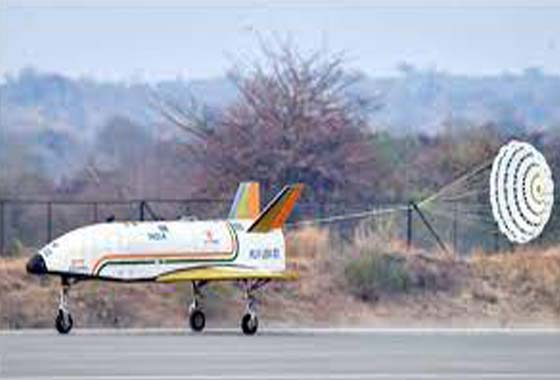
India’s Pushpak Viman was successfully launched by ISRO
Bengaluru: India’s 21st Century Pushpak Viman was successfully launched by ISRO on Friday in Karnataka. Pushpak an SUV-sized winged rocket dubbed the swadeshi space shuttle, successfully landed on a runway, in the country’s attempt to enter the reusable rocket segment.
ISRO Chariman Somnath said that the rocket was dropped from an Air Force helicopter as part of the test. The outcomes were excellent and precise, he added. Pushpak (RLV-TD), the winged vehicle, landed autonomously with precision on the runway after being released from an off-nominal position.
According to the ISRO statement, the mission successfully simulated the approach and high-speed landing conditions of RLV returning from space. Pushpak, was lifted by an IAF Chinook helicopter, and was released from 4.5 km altitude. After release at distance of 4km from the runway, Pushpak autonomously approached the runway along with cross range corrections. It landed precisely on the runway and came to a halt using its brake parachute, landing gear brakes and nose wheel steering system.
The making of the space shuttle by a dedicated team of engineers and scientists began 10 years ago. The 6.5-meter aeroplane-like craft weighs 1.75 tons. During its descent, small thrusters help the vehicle navigate to the exact spot where it is supposed to land. The Government has invested over ₹ 100 crore in the project.
The experiment was the third flight of Pushpak, part of a test of its robotic landing ability in more complicated circumstances. It is expected to take many more years to deploy Pushpak operationally, said in a statement.
It is India’s futuristic Reusable Launch Vehicle, where the most expensive part, the upper stage, which houses all the expensive electronics, is made reusable by bringing it back safely back to Earth. Later, it could even do refuelling of in-orbit satellites or retrieving satellites from orbit for refurbishment. India seeks to minimize space debris and Pushpak is one step towards that as well, said Somanth.
RVL flew for the first time in 2016 and successfully landed on a virtual runway in the Bay of Bengal. As per the plan, it sank in the sea and was never recovered. A second test was successfully conducted in 2023 when winged rocket was dropped from air by a Chinook Helicopter for an autonomous landing.
The rocket draws its name from the ‘Pushpak Viman’ mentioned in the Ramayana, known to be the vehicle of the Lord of Wealth, Kuber, he said.